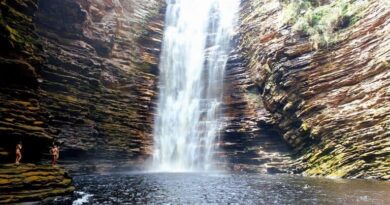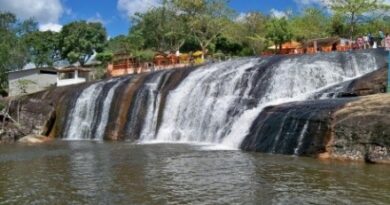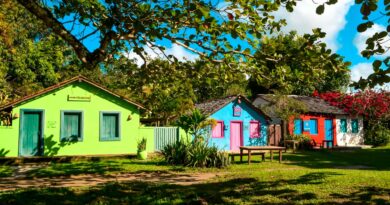hammered dulcimer sizes
Adding a thin layer of felt between two finished slats is recommended to create better final acoustics. There are step by step instructions in our Hammered Dulcimer Owner's Guidebook, and you can download a PDF copy here if you no longer have the one that came with your dulcimer. Each set of strings is tuned in unison and is called a course. The instrument can have either chromatic or diatonic tuning systems. Using a drill press, drill holes at a 15 degree angle away from the center of the instrument. With the wood you selected for your hammered dulcimer, begin by cutting the frame sides to length. This song is about the sadness of a woman. Good protection for your dulcimer and also economical. Some dulcimers instead use one continuous piece of wire for each course, meaning that the wire needs to be long enough to go from one tuning pin across the dulcimer and back to another tuning pin. A hard wood, such as maple, is suggested as these will support the tension of the strings. The hammered dulcimer also spread throughout Canada with the early settlers. Ethereal salterio music rang out in churches, theaters, and private palazzi. This is because there does not need to be a distinction from the Appalachian dulcimer (aka lap, plucked, or mountain dulcimer) as in the US. Once the glue is applied, be sure to apply pressure at all points using clamps and weights. This is our new soft side case made right here in our shop! Once the braces are cut to length, you may need to remove a fraction of a millimeter at the end of each for a perfect fit. It can still be heard in some Cantonese music or the traditional silk and bamboo genre of the Shanghai region called Jiangnan sizhu. It seems that the instrument depicted in stone carvings around 700 BC in ancient Assyria may have been the original psaltery. The larger size is referred to as 15/14. The Lady Victoria line of Hammered dulcimers are now available in two size options! More modern yangqin since the 1950s have steel alloy strings (in conjunction with copper-wound steel strings for the bass notes). The evolution of the psalterium resulted in the harpsichord; that of the dulcimer produced the pianoforte.[7]. There have been phases of popularity over the years, including hammered dulcimer music genres like celtic, hymns, polkas, waltzes, and even modern rock and pop songs. Replacing your first broken string can seem daunting, but with a little patience, a tuning wrench, and a pair of wire snips, you'll be a pro in no time. The quality of sound and the amount of sustain you desire in a hammered dulcimer is influence by the range, size and material choices. The player can incorporate portamentos (gliding from one note to another) and vibratos (pressing down on the strings) in this manner as they play. On the practical side, you want to make sure that you can tune the dulcimer and that it will stay in tune. About the author:In her childhood, Nicolette Foss could be found underneath piles of sawdust in her fathers hammered dulcimer workshop. If you can't obtain a string chart from the dulcimer maker, your best bet is to find a micrometer and measure the diameters of the strings that are currently on the instrument. A hammered dulcimer, like an autoharp, harp, or piano, requires a tuning wrench for tuning, since the dulcimer's strings are wound around tuning pins with square heads. There is a lot more detailed information elsewhere on the site, and you're more than welcome to give us a call if you'd like to talk to a person! For the back of the hammered dulcimer, use thick planks of wood. Musicians typically play this instrument with two light-weight beaters called hammers (mallets). The hammered dulcimer (also called the hammer dulcimer) is a percussion-stringed instrument which consists of strings typically stretched over a trapezoidal resonant sound board. We can't guarantee their compatibility with other makes of dulcimer. Marvelous, love the photos and videos as demonstrations, too! Here the choice of wood is yours, but we suggest using mahogany if this option is available to you. News Note: The D25 full set contains two strings per course. In an orchestra, the yangqins role is to play chords or arpeggios to add to the harmony. According to the Chinese Hammered Dulcimers research report, the market is rapidly evolving, and the influence is being analyzed both now and in the future. Size: 1/2. Hammered dulcimers typically use light gauge strings, which can be either metal or nylon. Hammered dulcimers can range from 2.5 to 4 or more octaves, and are proportional to the size of the instrument. Cimbalom. Hungary: The concert cimbalom was a variation created by V. Jzsef Schunda in 1874 in Budapest. The salterios of the 18th century in countries like Italy and Spain were played by the upper-class aristocracy for composed sinfonia or sonatas. Youve built your very own hammered dulcimer! , we discussed the varying possibilities of the original hammered dulcimer. The shift from the bass bridge to the treble bridge is required because the bass bridge's fourth string G is the start of the lower tetrachord of the G scale. The Persian santur has a diatonic tuning, with tones that are designated into 12 modes, or dastgahs, which makes up the classical music of Persia called the Radif. As an Amazon Associate, we may earn commissions from qualifying purchases from Amazon.com, Roosebeck Double Strung Hammered Dulcimer, Best Dulcimer Books & Instructional DVDs [2023], Sustain (how long the notes ring after they are struck). It has five bridges of varying sizes, and courses are double or triple-stringed. Schunda manufactured over 10,000 of his instrument and it soon became popular with the bourgeoisie and Romani (Gypsies) alike. We hear these questions all the time, so we've put together some basic information that a beginner might find useful. You hold a hammer lightly between your thumb and pointer finger and let it bounce on a string, preferably close to one of the bridges. This means the root note is on one side and the fifth is on the other as in our modern American hammered dulcimers. Repeat Step 6 using planks of the same high quality wood in this case, mahogany. Due to its fun shape and colors, the kids often are attracted to this variety of khim. Today the yangqin is sometimes referred to as the Chinese piano because it plays an integral role in accompanying string and wood instruments. The graphics below compare the various sizes of my traditional hammered dulcimers all except the 3/16/15/8 Travel which is located below in relationship to my 3/16/18/9 (7/8"). Do you find yourself liking it when the strings ring for a long time and build up a big wash of sound, or would you rather the notes had a shorter sustain and were more distinct from each other? If someone calls a tune in E-flat, you might be sitting that one out. If you're looking for a place to start, here are some popular choices from different parts of our price range. Unlike the American HD, are most of the other instruments tuned chromatically? Hammers are usually made of wood (most likely hardwoods such as maple, cherry, padauk, oak, walnut, or any other hardwood), but can also be made from any material, including metal and plastic. Be sure to use a level when installing the soundboard, so that it is evenly aligned with the rest of the instrument. However, for those looking to take their time to build a more precision instrument, allow at least 1-2 weeks. Others have a tuning diagram all their own as in the Cimbalom. The yangqin is usually played right in front of the conductor due to its soft sound. In places like Alberta, you can hear tsymbaly played at weddings, dances, competitions, festivals, and in recorded music. Hammered dulcimers all sound different, and the internet comes in very handy when you can't travel around and try a bunch of different brands in person. A good-sounding tsymbaly instrument is carefully crafted by its maker. We appreciate your continued patience if we are slower than usual to respond to your emails and phone calls. This type of tsymbaly was the reason for the instruments popularity in Eastern Ukraine in the post-war years. In this article, we review some of the best hammered dulcimers currently available online. Tsymbaly. We offer a variety of models and price levels to suit everyone from beginner to professional, and we are excited to share our love of this fascinating instrument with you! Apply tracing paper to the top of the soundboard and sketch out one or two decorative clefs. Typically the hackbrett is played along with an accordion, fiddle, and double bass quartet. In Italian, Spanish, and Portuguese, the name salterio was used to describe two kinds of zithers: the hammered dulcimer and the psaltery. The instrument is fully chromatic with up to five bridges and can have up to eight strings per course. This instrument is played not only in Iraq, but also in Syria, India, Pakistan, Turkey, Iran, Greece (the Aegean coasts), and Azerbaijan. This D major scale with a flatted seventh is the mixolydian mode in D. The same thing happens as the player goes up the treble bridge after getting to La (B in this case), one has to go to the left of the treble bridge. The notes extend from lower yakah (G) up to jawab jawab husayni (a) and is fully chromatic. The salterio is one of the less prominent forms of the hammered dulcimer in the modern age. These will serve as the contact points for the strings. The dulcimer comes in various sizes, identified by the number of strings that cross each of the bridges. These folks capture the essence of the Old World in their local music scene. The Persian Walnut Wood Santoor and Roosebeck Hammered Dulcimer both have 10/9 bridges for treble and bass course respectively, whereas the Sapelli Pioneer Hammered Dulcimer has 15/14 bridges for treble and bass course. Typically (not always), the hammered dulcimer is a string instrument hit with hammers, while a psaltery is plucked. The middle note is (La3 or A3) on the right side of the treble bridge. Your email address will not be published. . We mentioned the pantaleon in a previous post Where Did the Hammered Dulcimer Originate?. Not only is he an exceptionally talented builder, but he is a talented hammered dulcimer player as well. While you certainly dont need all of these tools to build your first hammered dulcimer, having these will make the job easier. The santur may have traveled its way over to China the many years it has been around. If youre not familiar with these tools, be sure to consult an expert before attempting to use them. Watch this interesting performance as Iraqi-American Amir El Saffar explains the Maqam, plays the santur, and sings: India: The santoor of India is said to be a variation of the Iranian santur, referred to as Shatha Tantri Veena (100-stringed instrument) in Sanskrit texts. It makes certain styles like blues, jazz, classical and non-Western folk music easier to play. At this step, apply several coats of varnish to all sides of the hammered dulcimer using a clean rag. When the braces are completed, one will be placed under each bridge and they will end up touching the soundboard. The Hutsul tsymbaly typically has 12-13 courses of strings. HDBP. Typically only professionals play these instruments for special occasions. You can start at any age, and you can have fun with it even if you don't know any music theory and have never played an instrument before. The lowest bass notes can be played on the right or left side of the instrument, opening up the possibilities for creative arrangements, and it can also be fitted with custom dampers for even more versatility. Local lumberyards and home improvement stores usually carry a variety of woods, but the selection may be limited. Do you happen to have any videos you could share of it being played? spacing between string courses (I think you can adapt to any spacing, really, though.) Dulcimer is also being used more and more by composers who write for film, and you can hear some examples of that in this post. But believe it or not, the hammered dulcimer is well known in certain pockets of the world. You can find strings for your hammered dulcimer at most music stores or online. Absolutely! Spruce is a popular choice of wood for soundboards, as it is strong and produces a loud, bright tone. We expect that most beginners will have at least a few questions that aren't covered here. Spare string packs contain one to three strings of each gauge used on that model, and are useful for having backup strings in case of breakage, but will not provide enough strings to restring the whole instrument. uraids, CC BY-SA 4.0
Gold Fever Wings 99 Recipe,
Glenview Farms Cream Cheese,
Strategies That Support Empowerment And Recovery,
Articles H



